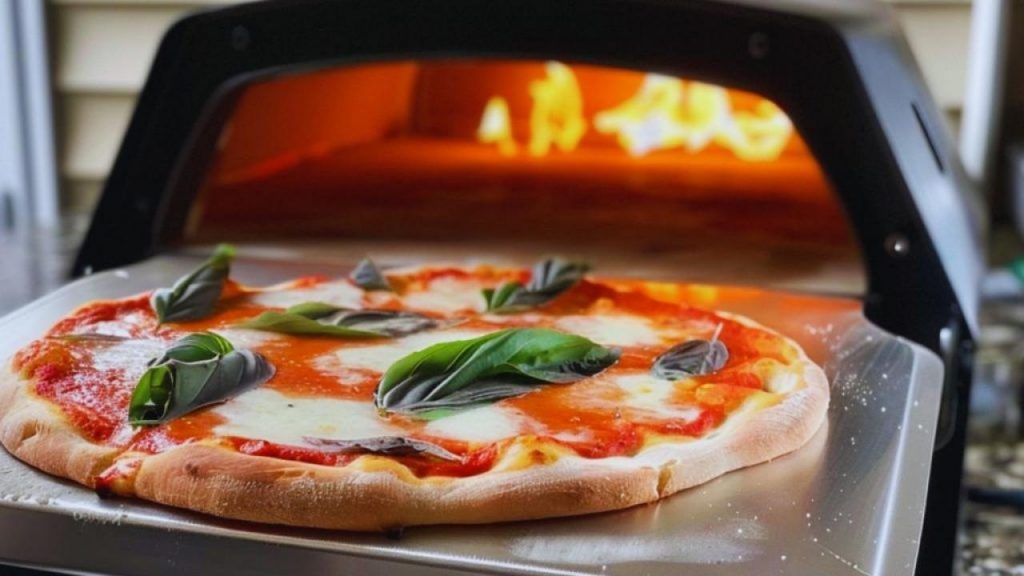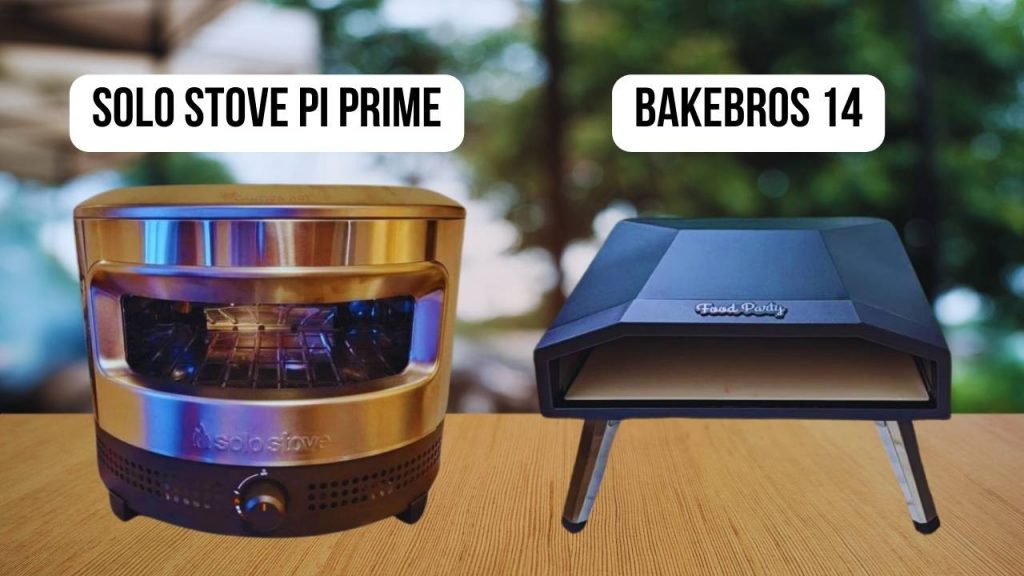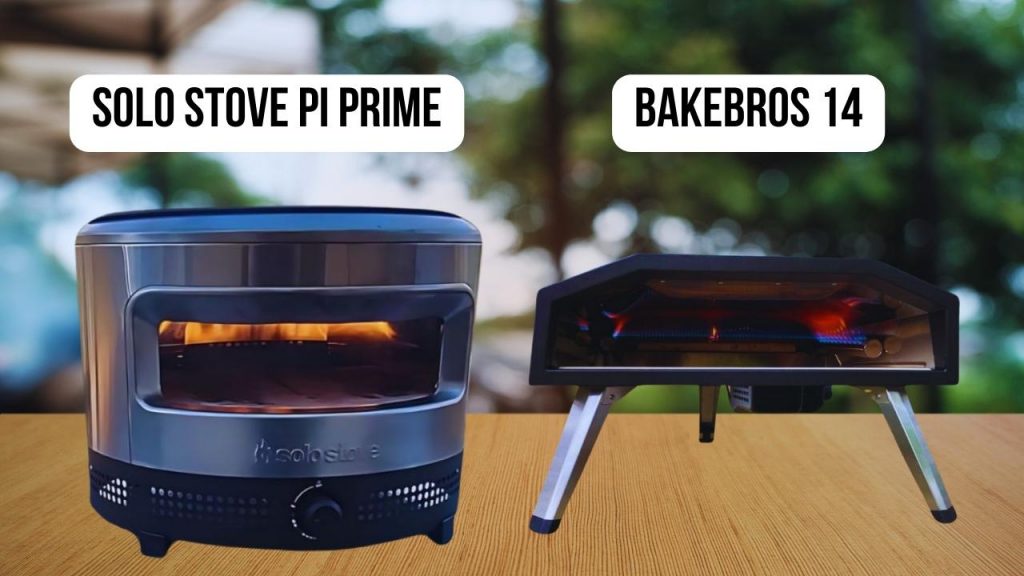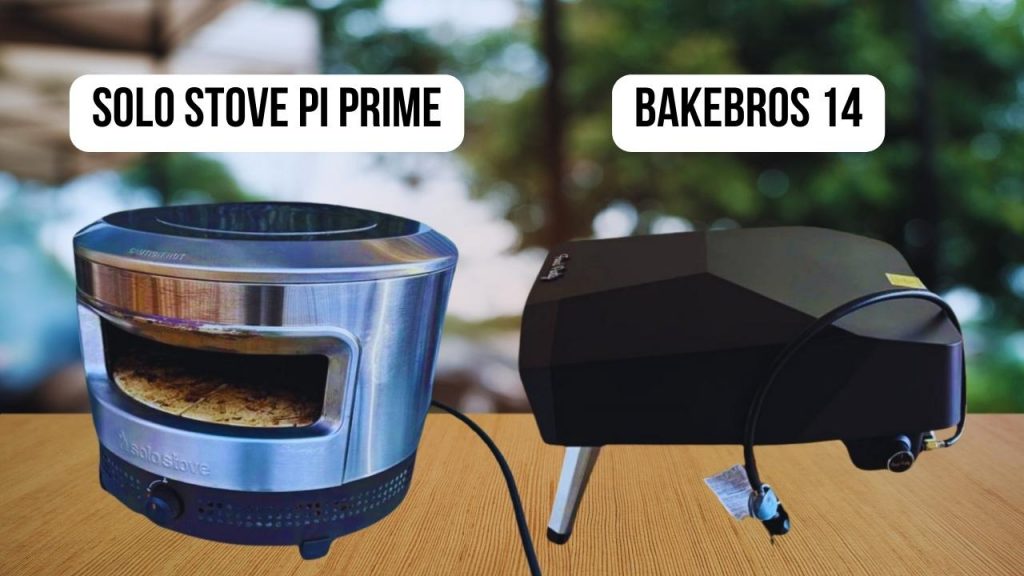As a restaurant chef with over 10 years of experience running my kitchen at Dequte Restaurant LironBoylston, I’ve had the chance to test and compare a wide range of outdoor pizza ovens. In this article, I’ll compare the Solo Stove Pi Prime and the Bakebros 14, both of which I’ve personally used in my kitchen. I evaluated each oven based on quality and materials, temperature control, shape, first-time usage impressions, power source, size, ease of cleaning, and I also conducted a real pizza cooking test to see how long each oven takes and how the final result tastes. If you’re interested in the detailed process I use to test pizza ovens, feel free to check out my separate article where I break it all down.
The Solo Stove Pi Prime is a propane-powered pizza oven known for its sleek stainless steel design, fast heating, and user-friendly operation — a strong choice for consistent high-heat cooking.
The Bakebros 14, on the other hand, is a dual-fuel oven that offers the charm of wood-fired cooking or the ease of propane, all packed into a compact and affordable unit built for versatility.
I’ve compared the Solo Stove Pi Prime and the Bakebros 14 in detail in this article, using my own test results.
These two pizza ovens missed the TOP-5 pizza ovens, yet they’re still great to own.
Disclaimer: I use referral links in this article, which help keep this blog alive. If you find my comparison helpful and decide to buy one of the ovens, I’d truly appreciate it if you use the links — it won’t cost you anything extra, but I may earn a small commission.
Solo Stove Pi Prime VS Bakebros 14: Quality and Materials
| The Solo Stove Pi Prime stands out with its durable stainless steel construction, offering long-term resilience and excellent heat retention. It feels premium and solid straight out of the box. |
The Bakebros 14 is also made from stainless steel but feels noticeably lighter and thinner. While durable, it lacks the heft and solid feel of the Solo Stove Pi Prime.
|
Solo Stove Pi Prime VS Bakebros 14: Temperature Control
| The Pi Prime uses propane for consistent heat. While it doesn’t have a built-in thermometer, it delivers steady, controlled flames that help maintain the ideal pizza cooking zone. |
Bakebros 14 does a great job reaching high temps (up to 900°F), but temperature consistency can vary. It performs well overall but may need more user attention during cooking.
|
Solo Stove Pi Prime VS Bakebros 14: Shape
| The cylindrical demi-dome shape of the Solo Stove Pi Prime encourages great airflow and even heat distribution, resulting in a balanced cook every time. |
Bakebros 14 has a more boxy design. While functional, the inner space feels a bit tighter when working with large pizzas or trying to rotate them mid-bake.
|
Solo Stove Pi Prime VS Bakebros 14: First-Time Usage Impressions
| My first use of the Solo Stove Pi Prime was smooth and exciting. Setup took just minutes, and the 12-inch Margherita pizza came out nearly perfect in look and taste. |
The Bakebros 14 was easy to set up and use as well. My first pizza required a bit more rotation and attention, but the outcome was still impressive.
|
Solo Stove Pi Prime VS Bakebros 14: Power Source
| The Solo Stove Pi Prime uses propane, offering clean, consistent heat. It’s hassle-free—no need to deal with wood or pellets during cooking. |
The Bakebros 14 also runs on LPG propane and performs well, but lacks some of the stability and flame precision that makes the Pi Prime stand out.
|
Solo Stove Pi Prime VS Bakebros 14: Size
| With a 15.5″ height and 20.5″ diameter, the Solo Stove Pi Prime hits a sweet spot between performance and portability. It’s light enough for one person to move, yet spacious enough to cook a 12-inch pizza with ease. |
The Bakebros 14 measures 24 x 17 x 14 inches and weighs around 40 pounds. It’s compact and portable, but fitting a true 14″ pizza is tough despite the name. Best for 12″ pizzas.
|
Solo Stove Pi Prime VS Bakebros 14: Ease of Cleaning
| Cleaning the Solo Stove Pi Prime is fast and straightforward. The pizza stones lift out easily, and the smooth stainless exterior wipes clean with just soap and water. |
Bakebros 14 is also easy to clean. Its removable stone and mesh disc help with access, though the materials don’t feel quite as polished as the Pi Prime.
|
Pizza Cooking Test

To keep things consistent, I tested both pizza ovens with a classic 12-inch Margherita pizza using the same dough, sauce, and mozzarella cheese.
Solo Stove Pi Prime impressed me right from the preheat stage. It reached optimal cooking temperature (around 700–750°F) in just 15 minutes, thanks to its efficient demi-dome design and propane-powered flame. Once ready, I launched the pizza and had a beautifully crisp, bubbly Margherita in just 90 seconds. The crust was evenly browned, the cheese melted perfectly, and the bottom had that satisfying, light char you’d expect from a wood-fired-style oven—no rotating necessary.
Bakebros 14″ Pizza Oven took a little longer to get up to speed. It hit its optimal temperature in about 25–30 minutes, and although it claims a 900°F top range, I found the stone temperature fluctuated more than with the Pi Prime. My Margherita pizza cooked in about 60–70 seconds, but it needed a quick turn mid-bake to avoid uneven browning. The result was still very good—cheese nicely melted and edges puffed—but the bottom crust needed more heat for a better char.
Verdict: Both ovens delivered delicious results, but Solo Stove Pi Prime gave me a more consistent, evenly cooked pizza with less effort and faster prep. The Bakebros 14 still makes a great pie but requires more attention during the cook.
How We Tested

As a restaurant chef with over a decade of experience at Dequte Restaurant LironBoylston, I approached this comparison with the same attention to detail I use in my kitchen every day. To ensure fairness, I tested the Solo Stove Pi Prime and the Bakebros 14” Outdoor Pizza Oven under similar outdoor conditions and using the same ingredients.
I used identical batches of homemade dough and tomato sauce, and fresh mozzarella for both tests. Each oven was preheated to its recommended temperature, and I monitored the stone surface with an infrared thermometer to ensure consistency. I cooked the same style of pizza—classic Margherita—in both ovens to directly evaluate their performance on cook time, crust quality, cheese melt, and overall flavor.
Beyond just the pizza results, I evaluated assembly, build quality, heating time, heat distribution, ease of cleaning, and real-world usability, including how intuitive each oven felt to use.
This side-by-side process allowed me to experience firsthand how these two ovens perform in a real cooking environment—and which one makes pizza nights smoother and more satisfying.
Final Thoughts

Whether you choose the Solo Stove Pi Prime or the Bakebros 14″ Pizza Oven, it ultimately comes down to what matters most for your cooking style—speed, flavor, portability, or ease of use. I personally find the Solo Stove Pi Prime a bit more consistent and reliable overall, but both ovens are solid choices for outdoor pizza lovers.
If you’ve made your decision and are ready to grab one, I’d truly appreciate it if you used my referral links below. It won’t cost you anything extra, but I’ll earn a small commission that helps keep my blog running and supports all the pizza testing I do for you.
Thanks for reading—and happy pizza making!
Don’t forget to check out the best pizza ovens list.



